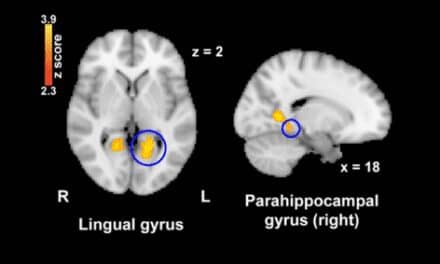
Patients relax to music or movies with Resonance Technology?s CinemaVision MRI-compatible 3D audio-video entertainment system.
Lakeview Regional Medical Center, a mid-size acute care community hospital in Covington, La, believes that the patient experience is of key importance. Recently, with the installation of Resonance Technology’s CinemaVision MRI-compatible 3D audio-video entertainment system, even an MRI procedure can become an enjoyable experience, worth telling your friends about.
The MRI environment, with its confined space and noisy activity, can be perceived as uncomfortable. And for many pediatric patients and for those with even minor claustrophobic issues, the MRI experience may become intolerable and may lead to the need for repeated exam sequences or sedation in order to obtain an acceptable MRI scan. Some centers opt for an open-bore MRI to manage patient comfort, but others feel it is often at the expense of image quality. Lakeview Regional Medical Center decided to go a different route to not only make the MRI experience acceptable, but to make it enjoyable.
Lakeview had originally invested in the CinemaVision technology with the purchase of its previous MRI machine in 2002. With the recent upgrade of their magnet to a powerful 16-channel HDtx system, they also upgraded their entertainment system to this latest version offered by Resonance Technology, which more completely immerses the patient in a relaxing and distracting environment with the use of 3D goggles and earphones directly linked to a digital library of songs and video channels. Patients can also opt to bring in their own iPod and download their music into the system. With the MRI technologist directly connected, they can control what the patient is viewing and hearing, as well as communicate with the patient during the procedure.
“It is extremely simple for the staff to use. It’s a matter of just saying, ‘What would you like to watch or hear?'” said John Gerhold, assistant radiology administrator at Lake-view. All of these features are designed to calm the patient and distract them from the MRI environment. “With this technology, it allows [the patient] to distract their mind with something else and allows us to do our job.”
When asked to describe their reasons behind this purchase, Gerhold said, “We are involved in a project through the Institute for Healthcare Improvement, where we are one of 48 hospitals that are specifically looking at strategies and ways to improve the patient experience. However, we decided for a lot of reasons, the claustrophobia, the [need for] sedation, the whole patient experience. You set yourself apart from the competition, and patients feel positive about the whole experience.” In the past, Lakeview’s radiology department had typically turned down pediatric patients who would require constant sedation. But with this new technology in place, they are now prepared to provide a sedation-free enjoyable MRI experience for the younger pediatric population as well. “The MRI business has increased significantly since we bought the technology. We have had a 20% increase in business in the first 6 weeks. In the past, we would give adults some mild oral sedation. Now we are not giving it to anybody at all; a 100% drop in oral sedation use.”
The whole procedure has already become more streamlined. “We were seeing up to three patients a week that we had to retest or cancel or refer out to an open magnet for testing. And now that we have this technology in place, we haven’t had a cancellation yet,” said Gerhold.
Gerhold explained that the decision to go with the CinemaVision technology coupled with a higher-powered twin-speed magnet was preferable to the option of an open magnet. “If you go with an open magnet, it takes an hour to scan you. With a closed magnet, with the twin-speed technology that we have now, it gets you in and out on a long exam in 15 minutes, most exams 8 minutes or less.” With the patient fully distracted and completely immersed in a different reality, he added, “I think our testing is much quicker beyond the speed of the magnet. We just don’t have to repeat sequences because someone moved.
“Ultimately, like any business, if your customer walks out feeling good about what they received, they will choose your facility if they need health care services. We actually do get a lot of comments from patients saying that it’s a wonderful experience,” said Gerhold.






